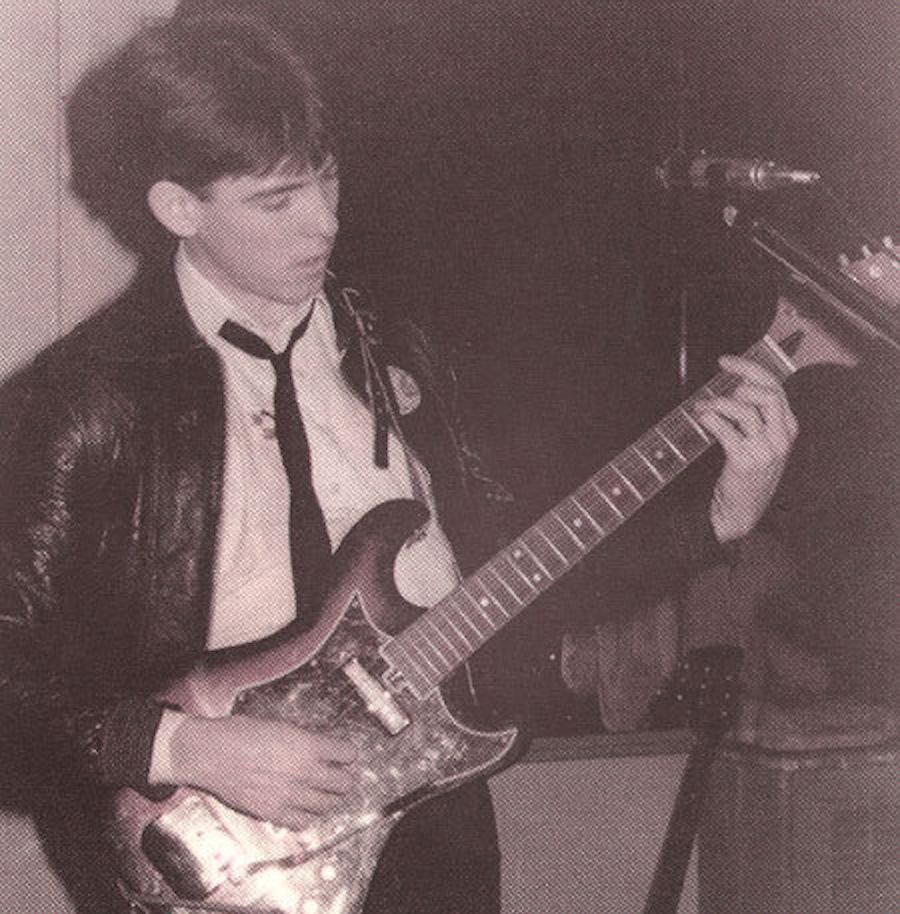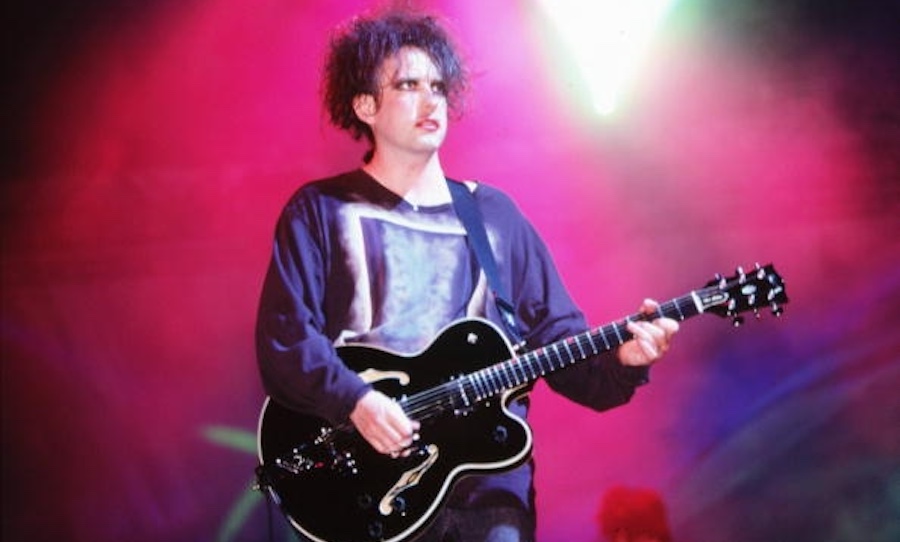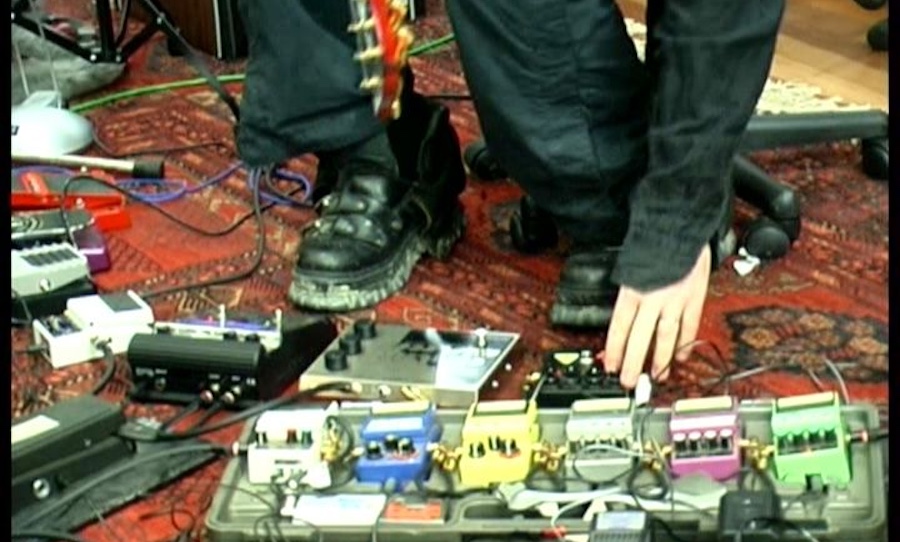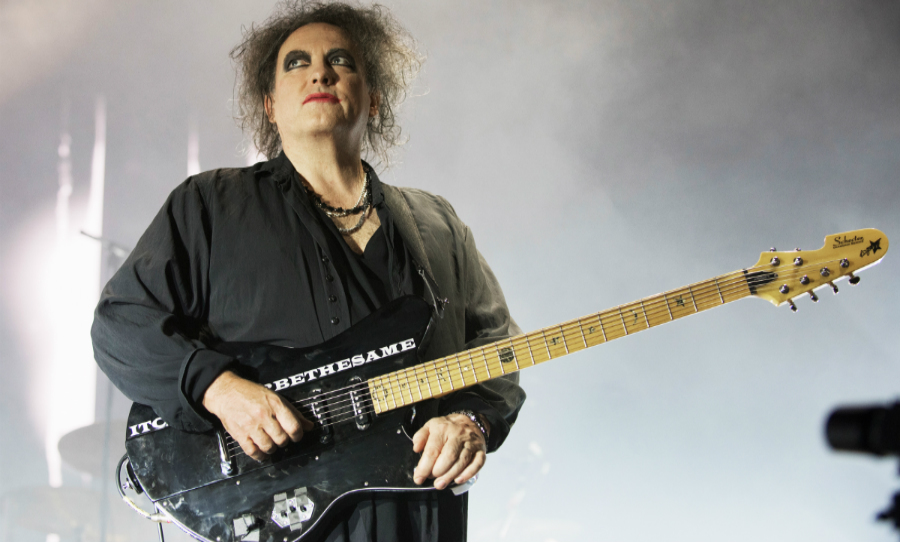Few musicians have left as indelible a mark on alternative music as Robert Smith, the visionary behind The Cure.
Since The Cure’s formation in 1976, Smith has crafted a sonic universe defined by melancholic melodies, lush atmospherics, and an unmistakable guitar tone.
His gear choices—spanning cheap department-store guitars, modified Fenders, and signature Schecters—reflect a philosophy where character trumps prestige, and simplicity breeds innovation.
So, sharpen your picks and adjust your chorus pedals as we delve into the instruments, amplifiers, and effects that have shaped The Cure’s timeless sound.
Guitars: From Trashy Treasures to Signature Staples

Woolworths Top 20 – The Humble Beginnings
Robert Smith’s first electric guitar was a Woolworths Top 20, a budget Japanese model notorious for its poor tuning stability and plywood construction. Despite its flaws, Smith adored its “trashy” tone.
When pressured to upgrade for the recording of Three Imaginary Boys (1979), he salvaged its bridge pickup and installed it into his next guitar—a move that baffled his producer but cemented his DIY ethos.

Fender Jazzmaster – The Gothic Workhorse
Smith’s Olympic White Fender Jazzmaster became his primary instrument in the late ’70s and early ’80s, famously outfitted with the Top 20’s pickup between its stock P-90s.
This mod contributed to the jangly yet biting tone on early classics like “Boys Don’t Cry” and “A Forest”.
Over the years, Smith refinished the guitar in black and natural finishes, reflecting The Cure’s evolving aesthetic.
Fender Bass VI – The Secret Weapon
Many of Robert Smith’s most iconic parts—like the shimmering drones on “Pictures of You”—were played on a Fender Bass VI, a baritone guitar tuned an octave below standard.
Its unique register, often drenched in chorus, became a hallmark of The Cure’s atmospheric sound.

Gibson Chet Atkins Country Gentleman – The ’90s Shift
By the Wish (1992) era, Smith transitioned to humbucker-equipped guitars, notably the Gretsch Chet Atkins Country Gentleman, which added warmth to hits like “Friday I’m in Love”.
Its semi-hollow design provided a richer, more resonant tone compared to his earlier Fenders.

Schecter UltraCure – The Modern Signature
In 2005, Robert Smith collaborated with Schecter to create the UltraCure, blending Jazzmaster aesthetics with modern playability.
A 12-string version and UltraCure VI (a Bass VI alternative) followed, becoming staples of his live rig in the 2000s and beyond.
Amplifiers: Clean Platforms for Ethereal Textures
Smith’s amp choices have varied widely, but his approach remains consistent: pristine cleans as a canvas for effects.
- Roland JC-120 – The backbone of early albums like Pornography, prized for its sparkling built-in chorus.
- Vox AC30 & Orange AD30 – Used during the Disintegration (1989) and Wish (1992) eras for tube-driven warmth.
- Roland Cube 80GX & Supro Black Magick – His current live setup, combining solid-state reliability with vintage-inspired tone.
Effects: The Boss-Dominated Pedalboard
Smith’s pedalboards are a testament to his “less is more” mentality—affordable Boss pedals arranged for maximum atmosphere.
The Core Pedals:
- Boss CH-1 Super Chorus – The cornerstone of his shimmering sound.
- Boss BF-2 Flanger – Used for swirling textures on tracks like “A Forest”.
- Boss SD-1 Super Overdrive – Subtle grit for leads, often stacked with a BD-2 Blues Driver.
- Boss DD-3/DD-7 Delay – Essential for creating space and depth.

The Three-Board System
Recent tours reveal a three-pedalboard setup:
- Baritone-focused (GE-7 EQ, SD-1, BF-3 Flanger).
- Main board (TU-3 tuner, BD-2, PH-3 Phase Shifter).
- Song-specific (DD-3 + dual flangers for “A Forest”).
Conclusion: The Beauty of Imperfection
Robert Smith’s gear philosophy defies convention—whether it’s grafting a cheap pickup into a Jazzmaster or relying on plastic-cased Boss pedals in an era of boutique excess.
His genius lies in transforming limitations into signature sounds, proving that tone is less about the price tag and more about the player’s vision.
As The Cure continue to tour and inspire, Smith’s rig remains a masterclass in how simplicity can shape a legacy. Now, if you’ll excuse us, we’re off to crank the chorus and play “Just Like Heaven” for the hundredth time.


